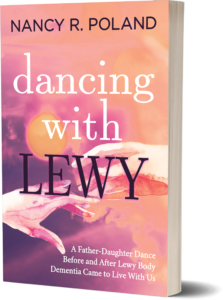Who Makes Better Caregivers – Women or Men?
Celebrating Male Caregivers on Father's Day
Which gender makes better caregivers?
It depends!
Caregiving is as individual as people. We all know both women and men who are wonderful, loving caregivers, and then there are people who are unable or unwilling to be a caregiver for a variety of reasons.
Professionally speaking if a loved one or I were in the hospital, I would prefer to have an aide or nurse who is competent and generally cares about my loved one or me, regardless of their gender.
Traditionally, it is true that women often end up being the primary caretaker of children, aging parents, or other loved ones. But many men also take on a caregiving role and today is a good day to celebrate men who give from their hearts to others. How many?
According to AARP®, there were sixteen million family caregivers in 2017, and 40 percent were male.[i]
I worked with a gentleman I will call “Henry” who took excellent care of his uncle, as his closest living relative. Henry made sure his uncle had necessities such as food, kept him company, and handled his property when his uncle passed.
I have witnessed wonderful male caregiving in my own family:
- When I have had surgery or been ill, my husband John consistently goes over and above to meet my needs.
- My husband was a single dad before I met him to his son Lee, who is my much-loved stepson. John coordinated childcare while he worked full time, made sure Lee was fed, clothed, and kept busy and out of mischief. When our youngest son Corey was born two months prematurely, John took turns feeding him every three hours and rocking him to sleep. He coached both boys in sports, and was the person designated to take them to the doctor when they needed stiches or shots! Wishing my hubby a happy Father’s Day today!
- Even though my dad was aging himself, and suffered from dementia, he took care of my mom, who had a number of physical limitations. I wrote in “Dancing With Lewy”, “My mother took care of my dad and herself mentally, sorting their medications and making easy lunches and dinners. My dad took care of her physically, making their toast in the morning when mom was sleepy and doing simple household tasks.”
- My Dad never stopped worrying about his four daughters. When he was in his eighties, and I would travel for work, he would advise me to keep alert and lock my hotel room doors. Missing my dad on this Father’s Day.
In “Remarkable Caregiving: The Love of Family and Friends”, you can read the true story of two friends, Phil and Wally. For many years, the two snowmobiled together and enjoyed other outdoor spots. Sadly, Wally developed Parkinson’s disease in his fifties. Phil could have looked the other way, but instead he became the “Relief Pitcher” for Wally and his family. This touching story spotlights a male bond lasting through the good times, and the toughest times. The sketch was created to represent Phil and Wally.
In the interview I asked Phil, “Do you see any differences in how you as a man experience caregiving versus how you see women doing so? How do you think caregiving is different from a man’s point of view?”
Phil replied, “I do not want to sound sexist…” You will have to read the book to see what words of wisdom Phil shared with us.
I found an inspirting male caregiving group at the First African Baptist Church in Philadelphia. The leader advises, “Pain is Pain”, and asked the group to consider “What gives life purpose and meaning?” and “Caregiving is a privileged opportunity”. Click below to watch the video.
Yes, there are cultural and physical differences between men and women, which can certainly vary by family, location and background. Everyone is different, but “different” does not have to mean “better”, or “worse”.
Caring for others does not have limitations, other than a willing heart.
On this Father’s Day celebrate the many men who care for others, not only out of necessity or duty, but out of love and compassion for others.
You can read about other male caregiving experiences in both “Dancing With Lewy: a Father Daughter Dance Before and After Lewy Body Dementia Came to Live With Us” and “Remarkable Caregiving: The Love of Family and Friends”. There is more informaton on how to obtain the books on Nancy’s Website.
[i] Jean Accius, PhD, Spotlight 26, March 2017 Breaking Stereotypes: Spotlight on Male Family Caregivers, AARP Public Policy Institute
Photo by Streetwindy from Pexels
Sketch by Nancy Muellner, nancymuellner.com


